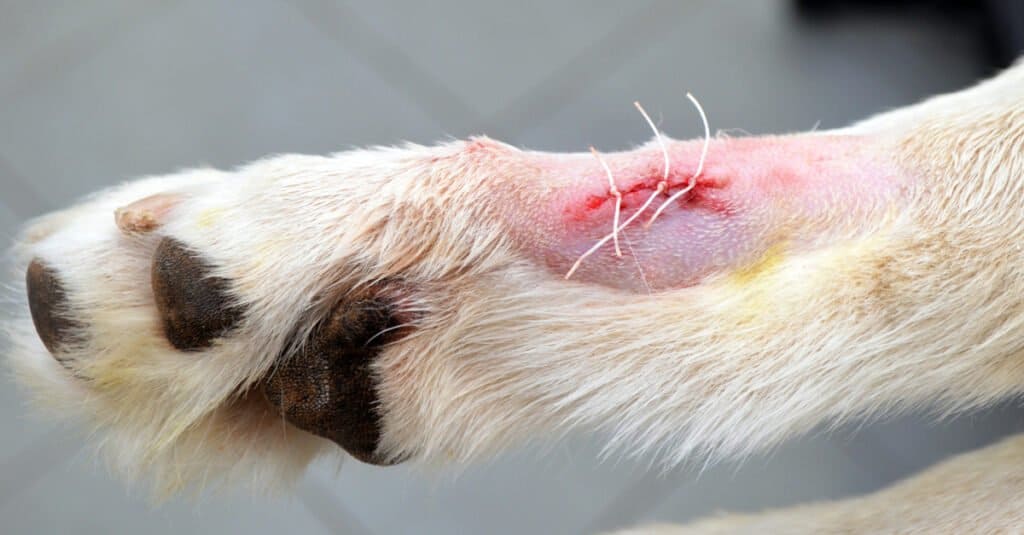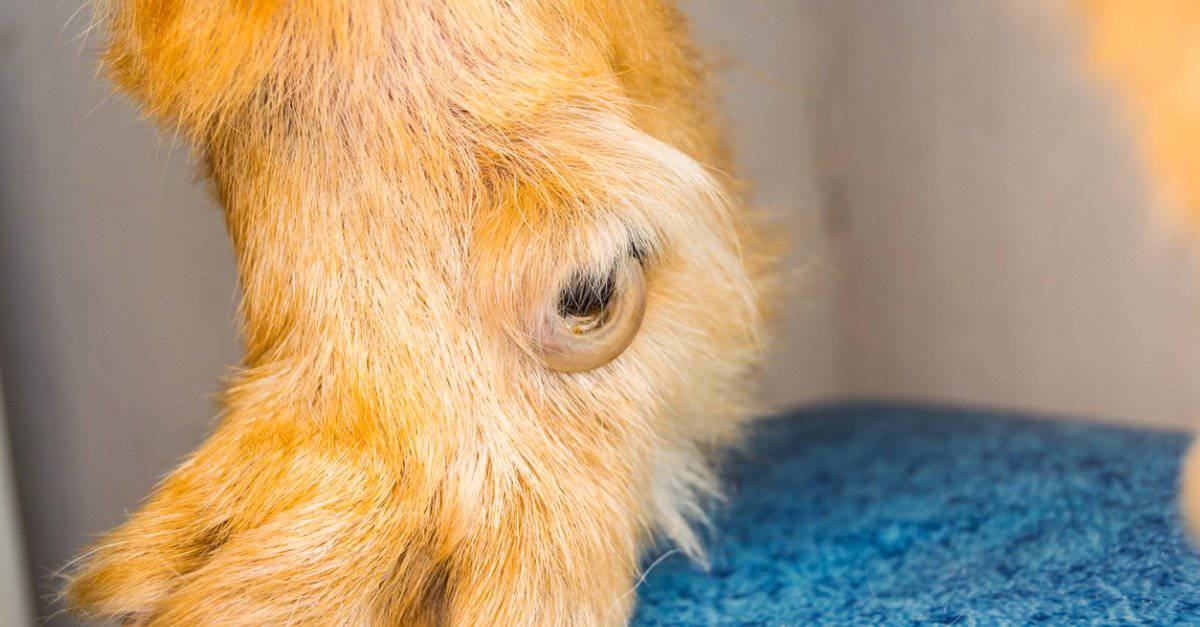What is a Dewclaw?
Every pet owner loves to cuddle and tend to their pup, knowing every marking and spot that makes their precious pet into their loved one. The feet are particularly interesting. If you take a look while you trim their nails, you most likely see five nails on their front paws and four nails on their rear paws. If you see an extra, you might be looking at a dewclaw.
A dewclaw is a lot like a thumb, though it doesn’t give the dog nearly the same dexterity as it does a human. On the rear, it acts as a big toe. To determine if this digit is a dewclaw, feel the joint to determine if it is connected to the leg (which it should be). If attached by bone, the dewclaw often helps dogs to get better traction while running or turning on a slippery surface. Some dogs even use them to get a better grip on their toys or to climb out of the water. Unfortunately, if the dewclaw is only held on by skin, there is little function or purpose in keeping them. Read on to learn more about everything you need to know about dewclaws.
Dewclaw Removal: What, Why, When and How

©Madeeva_11/Shutterstock.com
What: What is Dewclaw Removal?
Dewclaw removal is a surgical procedure that takes off the digit known as the dewclaw. It removes the entire claw, which is ordinarily located along the front and back paws. Some vets and pet owners feel that this removal is unnecessarily cruel in the same way that they see declawing a cat, arguing that the procedure isn’t necessary.
For most dog owners, removal is never a concern in their minds. These claws can safely be kept intact without any kind of damage to the dog. However, to properly remove them, great care is needed to keep bandages clean as the stitches heal. Most often these procedures are performed on back dewclaws, which are much rarer. Dewclaws on the front paws are more helpful to the dog, which is why it can be hard to find a vet to perform the procedure.
Why: Reasons to Remove Dewclaws
Multiple factors play a role in whether a dewclaw should be removed. One thing you need to know about dewclaws is that the front dewclaws largely should not be removed. However, in rare cases, this digit can be damaged or become infected. The determining factor in their removal primarily has to do with the best interest of the dog.
As a way to prevent injury, some vets suggest removing the rear dewclaws as a way to keep the dog from injuring itself. Luckily, injury in the back paws is also rare, which is why there is so much debate over whether these surgeries truly have a preemptive necessity.
The majority of pet owners that remove dewclaws will do so as a cosmetic procedure, improving the appearance for shows and competitions. Some dogs have dewclaw injuries that damage the digit irreparably. It can be broken, split, infected, ingrown, or even pulled off. When this type of damage occurs, the best thing you can do is visit a veterinarian.
When: The Best Age to Remove Dewclaws
If you choose to remove dewclaws from your dog’s paws at all, time is of the essence. The two most common times to remove dewclaws are within five days of birth or when the dog is spayed/neutered (which is around 12 weeks old). Dealing with this extra digit early will ensure that the dog has no lasting damage or difficulties with their walking.
The only other times that the dewclaws are typically removed is in the event of injury or infection. Otherwise, there is no need to remove this part of the foot with regular care. Though it was once a common procedure, vets seem to have changed their mind about its necessity through the last couple of decades, falling into the same category as tail docking and ear cropping.
While puppies often have no pain-blocking medication during this procedure, older animals typically undergo general anesthesia.
How: How to Maintain or Remove Dewclaws

©Glynsimages2013/Shutterstock.com
Though dewclaws may seem a bit odd, they are relatively easy to take care of. They can be trimmed like any other nails, so they won’t require any particular grooming supplies. Many active breeds tend to wear down their nails naturally, including their dewclaws. However, sedentary dogs will need them trimmed to prevent breakage and infection. They also might need to be trimmed more often because they don’t reach the ground.
If you choose to remove them, this procedure must be performed by a vet. The procedure itself is relatively straightforward, only taking about a minute to complete. Still, since there is bone and skin to cut through to reach the dewclaw, it is incredibly painful for neonatal puppies. Most often, no general anesthesia is even used, but some vets will inject the paw with lidocaine (which still hurts the puppy).
Healing from dewclaw removal is rather simple, but there’s always a chance that the nail will grow back or that the incision site will become infected without the right care. Typically, bandages must be kept on the legs for about 10 days, and some dogs must sport an Elizabethan collar to prevent them from chewing at the site.
Is Dewclaw Removal Necessary?
After learning everything you need to know about dewclaws, the short answer is no. There is no true medical benefit to the removal of the dewclaw for a healthy dog. While infection can be enough of a reason for some pet owners to remove the claw, but there are antibiotics and other treatment options as well. If the dewclaw is impossible to save, the discussion to remove it should always be with a veterinarian.
There are some breeds where it has become standard to show them with the front dewclaws removed during competition. Some breeds, like the Great Pyrenees, and Norwegian Lundehund, are expected to have dewclaws in the show ring. Dewclaws were necessary for them in their roles as working dogs and are always present at birth.
Up Next…
- Safely Trim a Dog’s Nails Without Getting Bit (Or Causing Harm): Learn to trim your dogs nails yourself to save on groomer fees and pet trauma.
- The Best Pet Nail Trimmer for 2022 – Reviewed and Ranked: If you want to do your dogs pedicure yourself – we have picked the best nail trimmers available. Check them out!
- Why Do Dogs Have Tails? The Surprising Reasons.: They aren’t just for wagging – find out the purposes for dog tails!
- 7 Essential Dog Grooming Tools For Professionals: Whether you do it yourself or you want to start a dog grooming business – these tools are a must!
Thank you for reading! Have some feedback for us? Contact the AZ Animals editorial team.








